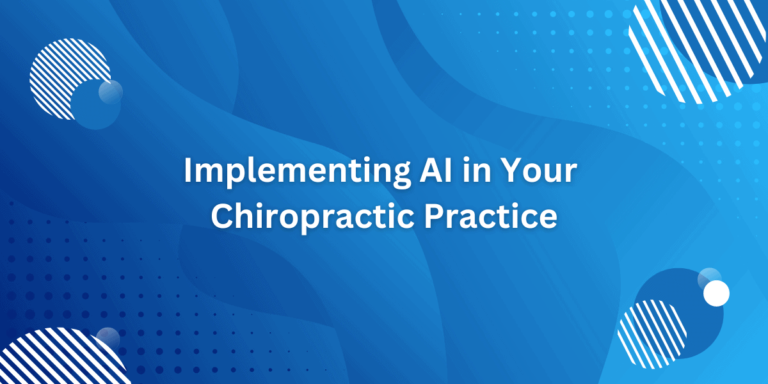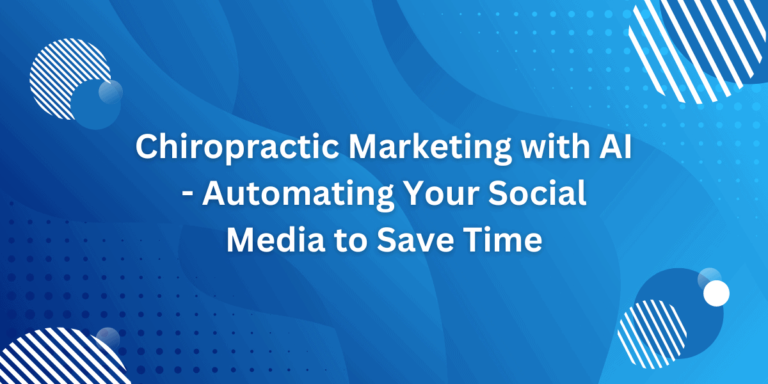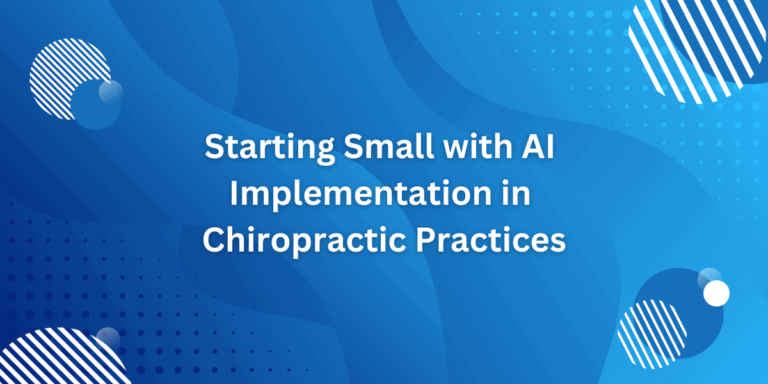As a chiropractor considering the integration of Artificial Intelligence (AI) into your practice, you might be wondering: “Will AI be too complicated for me and my staff to use?”
This is a common and valid concern.
However, the reality is that many AI tools designed for healthcare practices, including chiropractic offices, are built with user-friendliness in mind.
Let’s go deeper into this topic and explore why AI might be more accessible than you think.
The Evolution of AI User Interfaces
In the early days of AI and computer technology, user interfaces were often complex and required specialized knowledge to operate.
However, the tech industry has made significant strides in creating intuitive, user-friendly interfaces.
Modern AI tools for healthcare practices are designed with the end-user in mind – busy healthcare professionals who need efficient, easy-to-use solutions.
Many AI companies employ user experience (UX) designers who work alongside AI engineers to create intuitive interfaces aligned with healthcare practices’ workflows.
The result is AI tools that often resemble the software you’re already familiar with but with enhanced capabilities.
AI Tools Designed for Healthcare Professionals, Not Tech Experts
When choosing AI tools for your chiropractic practice, look for solutions specifically designed for healthcare professionals. These tools often feature:
- Intuitive Dashboards: Clear, easy-to-navigate main screens that provide an overview of key information at a glance.
- Guided Workflows: Step-by-step processes that guide you through complex tasks, much like a GPS guides you to your destination.
- Contextual Help: Built-in assistance that provides information and tips relevant to what you’re currently doing in the system.
- Customizable Interfaces: Options to adjust the interface to match your preferences and work style.
- Integration with Existing Systems: Seamless connections with your current electronic health records (EHR) or practice management software, reducing the need to learn entirely new systems.
The Importance of Training and Support
While AI tools are becoming increasingly user-friendly, proper training and support are still crucial for successful implementation. Here’s why:
- Customized Learning: Training can be tailored to your practice’s specific needs and your staff’s varying levels of tech-savviness.
- Confidence Building: Hands-on training allows you and your staff to gain confidence in using the new tools before implementing them in your daily workflow.
- Efficiency Boost: Learning best practices and shortcuts can help you maximize the benefits of your AI tools from the start.
- Ongoing Support: Many AI providers offer continuous support, ensuring help is available if you encounter any issues or have questions down the line.
When choosing an AI solution, consider the training and support offered by the provider. Look for options like:
- In-person or virtual training sessions
- Video tutorials and user guides
- 24/7 customer support
- Regular system updates and feature explanations
Gradual Implementation: The Key to Smooth Adoption
One effective strategy for adopting AI in your practice is to implement it gradually. This approach allows you and your staff to become comfortable with the new technology without feeling overwhelmed. Here’s a step-by-step guide:
- Start with One Area: Begin by implementing AI in a single area of your practice, such as appointment scheduling or billing.
- Choose Power Users: Designate one or two tech-savvy staff members to become experts in the new system. They can then help train and support other staff members.
- Set Realistic Goals: Establish achievable milestones for AI adoption, allowing time for learning and adjustment.
- Gather Feedback: Regularly check in with your staff about their experiences with the AI tools. Use this feedback to address any issues and optimize your use of the system.
- Expand Gradually: Once you’re comfortable with the initial implementation, slowly expand the use of AI to other areas of your practice.
The Learning Curve: Shorter Than You Might Think
While there is always a learning curve with new technology, you might be surprised at how quickly you and your staff adapt to AI tools.
Many chiropractors report that after an initial adjustment period, usually a few weeks to a month, using AI becomes second nature.
Remember, these tools are designed to mimic human thought processes and decision-making.
In many ways, they think like you do, making them intuitive to use once you understand their basic principles.
The Payoff: Enhanced Efficiency and Patient Care
As you become more comfortable with AI tools, you’ll likely find that they significantly enhance your practice’s efficiency.
Tasks that once took hours can be completed in minutes, freeing up more time for patient care. AI can help with:
- Automating appointment reminders and reducing no-shows
- Streamlining billing and insurance claim processes
- Analyzing patient data to identify trends and improve treatment plans
- Enhancing patient communication and follow-up care
Embracing the Future of Chiropractic Care
While the idea of implementing AI in your practice might seem daunting at first, remember that these tools are designed to support and enhance your work, not complicate it.
With user-friendly interfaces, proper training, and a gradual implementation approach, you and your staff can successfully adopt AI technology.
As the healthcare landscape continues to evolve, embracing AI can help your chiropractic practice stay competitive, improve patient outcomes, and operate more efficiently.
The key is to approach the process with an open mind, take advantage of available training and support, and focus on the long-term benefits for your practice and patients.
In conclusion, don’t let fears about complexity hold you back from exploring AI solutions for your chiropractic practice.
With the right approach and mindset, you’ll likely find that AI is not only manageable but also a powerful tool that enhances your ability to provide excellent patient care.





